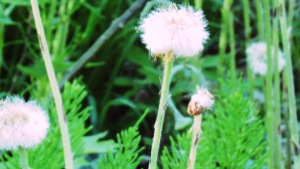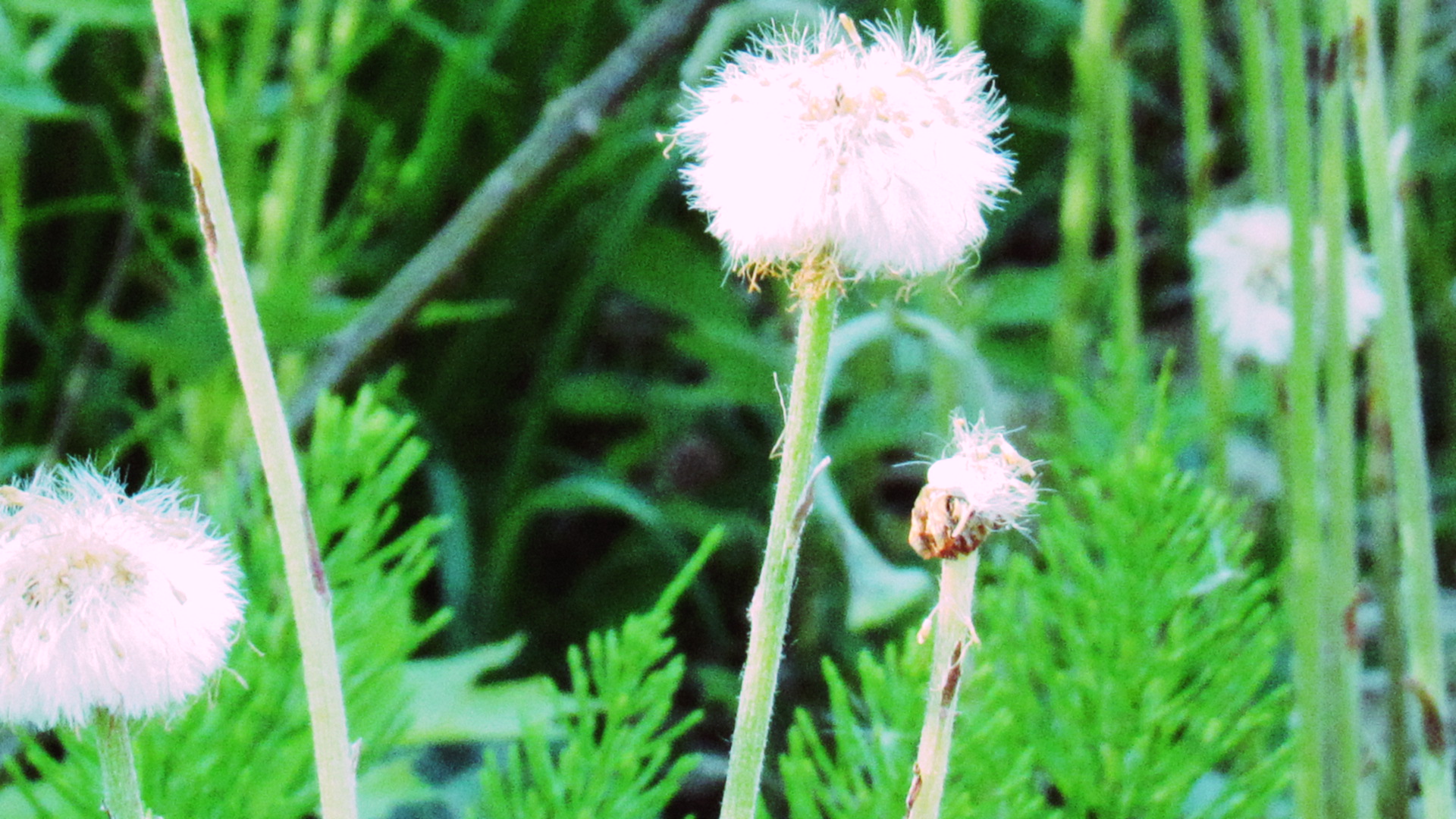Photo by Naomi Ullian.
Or, Brian Jacques, eat your heart out.
Last summer I threw a potluck on the stone patio of my house-sit, which was tucked down in the fog-filled green mountains of North Carolina, and I let it be known to my dear guests that the food theme was Redwall.
That’s right. Food theme. Redwall. I’m not ashamed. Please, consider this passage:
“Brother Alf remarked that Friar Hugo had excelled himself, as course after course was brought to the table. Tender freshwater shrimp garnished with cream and rose leaves, devilled barley pearls in acorn puree, apple and carrot chews, marinated cabbage stalks steeped in creamed white turnip with nutmeg.”
If I have any ambitions at all as a gardener, forager, cook, or dinner host, how could the fare described in these woodland epics not be esteem-able inspiration? Is your mouth not watering?
And please be honest: how many potlucks have you showed up to with a bag of tortilla chips and a tub of hummus, not homemade? I name myself guilty. Throwing a themed potluck shores up the quality of the eats.
One of my favorite springtime recipes, the Dandelion Fritter, is a bitter-and-salty pancake treat whose main ingredient I glean largely from my backyard (and, okay, maybe also the neighbor’s) and which I consider entirely Redwall-worthy. It’s hearty, elegant, nutritious, and it satisfies so many of my personal food requirements: suitable for eating at any time of day, easily made by children, and lovely to slather with something delicious.
Many an herbalist has written about the root of dandelion (Taraxacum officinale), so I’ll touch only briefly on this. The root is cool and bitter as well as sweet, contains inulin and a latex-like substance, and acts as an alterative, cholagogue, and diuretic. The tonic use of this medicine is suited to chronic inflammatory liver conditions such as hepatitis, and its alterative properties have shown it to be effective in boils, edema, and breast health. The bitterness of the whole plant indicates its assistance at the intersection of the GI and hepatic systems, as bitter flavors stimulate bile flow and help with fat emulsification for digestion.
The flower, however, apart from its fame in wine recipes, deserves more thorough attention, which you may imagine me offering with a yellow pollen-dusted nose which comes from sticking your schnoz in a big ducky dandelion head.

The “aerial parts,” or the leaves together with the flowers, have long been prepared and consumed for their dense nutrition. Closely related to chicory, domesticated lettuce varieties, and of course the fancier bitter leaf vegetables like the escaroles,
the leaf of dandelion in Chinese medicine is thought of as a bitter and cold herb par
ticularly effecting the urinary tract, the liver, and digestion. What old world herbalists called the nutritious “salts” of the leaves and flowers refers to the heaps of mineral and vitamins, including beta-carotene and the resulting Vitamin A, famous for improving vision and found in research to support epithelial tissues battling cancerous growth, such as in the respiratory tracts. The rest of the micronutrient profile basically reads like a vitamin bottle label: fiber, potassium, iron, calcium, magnesium, phosphorus, B vitamins, copper, cobalt, zinc, boron, molybdenum, and Vitamin D.
In my strolls through the interweb, I came across some exciting research about this plant, whose virtues cancel all considerations for me to consider it a noxious week.
+ In 1956, French researcher Dr. Remy Chauvin investigated the long-lived Korean folk practice of dandelion flower use in conditions involving boils, skin infection, edema, and poor circulation, demonstrating the antibacterial properties of pollen.
+ In 1982, scientists in dentistry at Indiana University created antiplaque preparations using latex extracts from dandelion.
+ The latex, the sticky milky goo that oozes when you pick a leaf or flower, has been used for wart removal and to soothe burns — kind of like medicinal band-aids.
+ On a good and windy day, the seeds of the dandelion can be blown miles away from the parent plant.
+ Dandelion root produce a natural dye that offers fibers a rich shade of brownish-red.
+ Botanists call dandelions “perfect” flowers because they contain both male and female organs within the same bloom.
+ The pollen produced by the dandelion flowers is sterile, and botanists do not yet agree on why the plant continues to use energy to produce pollen that it does not use.
I suppose the most appealing gustatory experience of the Dandelion Fritter is its texture. I adore the way the fried blooms offer a crispy pop as I chew, the fritter as a whole a satisfying experience in light savory hors d’oeuvres.

It occurs to me that I should acknowledge a certain lack of specificity when it comes to amounts (tsps versus tbsp, etc) in my recipes. This is how my grandmother cooked (and we adored her Hungarian Goulash), and this, as it turns out, is how I cook. You’ll probably guess I am a less successful baker than I am a cook (though my grandmother’s pies are experiences my family can wax poetic about). However, I do believe that cultivating an eye for texture and a tongue for tasting as you go along is the best experiential education in the acquiring of kitchen skills.
And so I offer you my Dandelion Fritter recipe.
DANDELION FRITTERS
+ Beat 2-3 eggs with salt, pepper, and a dash of cream or milk. (I like to add ground nettles and minced onions or garlic, although not strictly necessary.)
+ Add one cup of fresh dandelion blooms or enough blooms until a thoroughly coated mixture forms without excess liquid.
+ Sprinkle flour of your choice (I like teff or dark buckwheat) until the mixture becomes sticky.
+ Form cakes with clean hands and fry in butter until golden brown on both sides and egg does not run out when fritter is pressed with spatula.
+ Serve with goat cheese, sour cream, ramp pesto, or nothing at all.
DANDELION FLOWER BITTERS
Cooling bitter tonics clear heat and move dampness, so its a pretty good addition to the daily food rituals for those of wringing the melting snow from our bones and wishing the liver would move along with the accumulations from winters’ necessarily heavy foods. If you live in a warm and humid area, where springtime brings thick wet weather and temperatures that cause your clothes to cling, this is also a useful tonic. I like to take 5-15 drops of the following formula 20 minutes before or after eating.
3 parts fresh Dandelion blooms
2 parts fresh Mugwort leaf
1 part fresh Mint leaf
1 part fresh or dried Lavender buds

To make this bitters formula, you may either combine simples (single-herb tinctures) in the suggested ratio of parts, or you can pack the fresh macerated herbs into a jar with a clear grain alcohol according to the ratios suggested. Allow to infuse at least two weeks, and then press and strain the herbs out.
RESOURCES
“Health Benefits of Dandelions,” The Leaf Lady. www.leaflady.org/health_benefits_of_dandelions.htm
“Dandelion,” A Modern Herbal, M. Grieve. http://www.botanical.com/botanical/mgmh/d/dandel08.html
“Dandelion,” Winter Botany 2012, http://winter2012bioportfolios.providence.wikispaces.net/Dandelion
Matthew Wood, The Book of Herbal Wisdom: Using Plants as Medicines
